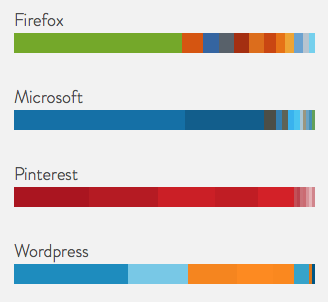It's always refreshing to happen upon a web-related project that gives you pause to consider the thought that goes into building website color schemes. From a user's perspective, website color can set the tone of the content, maintain a brand, or reinforce navigational flow.
Interaction designer Ri Liu and web developer Bo Jeanes created a website webcolourdata.com that showcases the current color palettes in use among some of the most popular websites. By condensing each website to a strip of hues you can begin to notice established themes that go beyond the expected "eye candy" reaction. I also found the breakdown of color for each website (accessed by clicking on each website color strip) an interesting approach to analyzing the use (by percentage) of each hue with their corresponding hex value.
For user interface designers this site offers a chance to see what's been done by some ubiquitous websites while potentially being a place to pause and borrow a hue or two for a project.
Interaction designer Ri Liu and web developer Bo Jeanes created a website webcolourdata.com that showcases the current color palettes in use among some of the most popular websites. By condensing each website to a strip of hues you can begin to notice established themes that go beyond the expected "eye candy" reaction. I also found the breakdown of color for each website (accessed by clicking on each website color strip) an interesting approach to analyzing the use (by percentage) of each hue with their corresponding hex value.
For user interface designers this site offers a chance to see what's been done by some ubiquitous websites while potentially being a place to pause and borrow a hue or two for a project.
